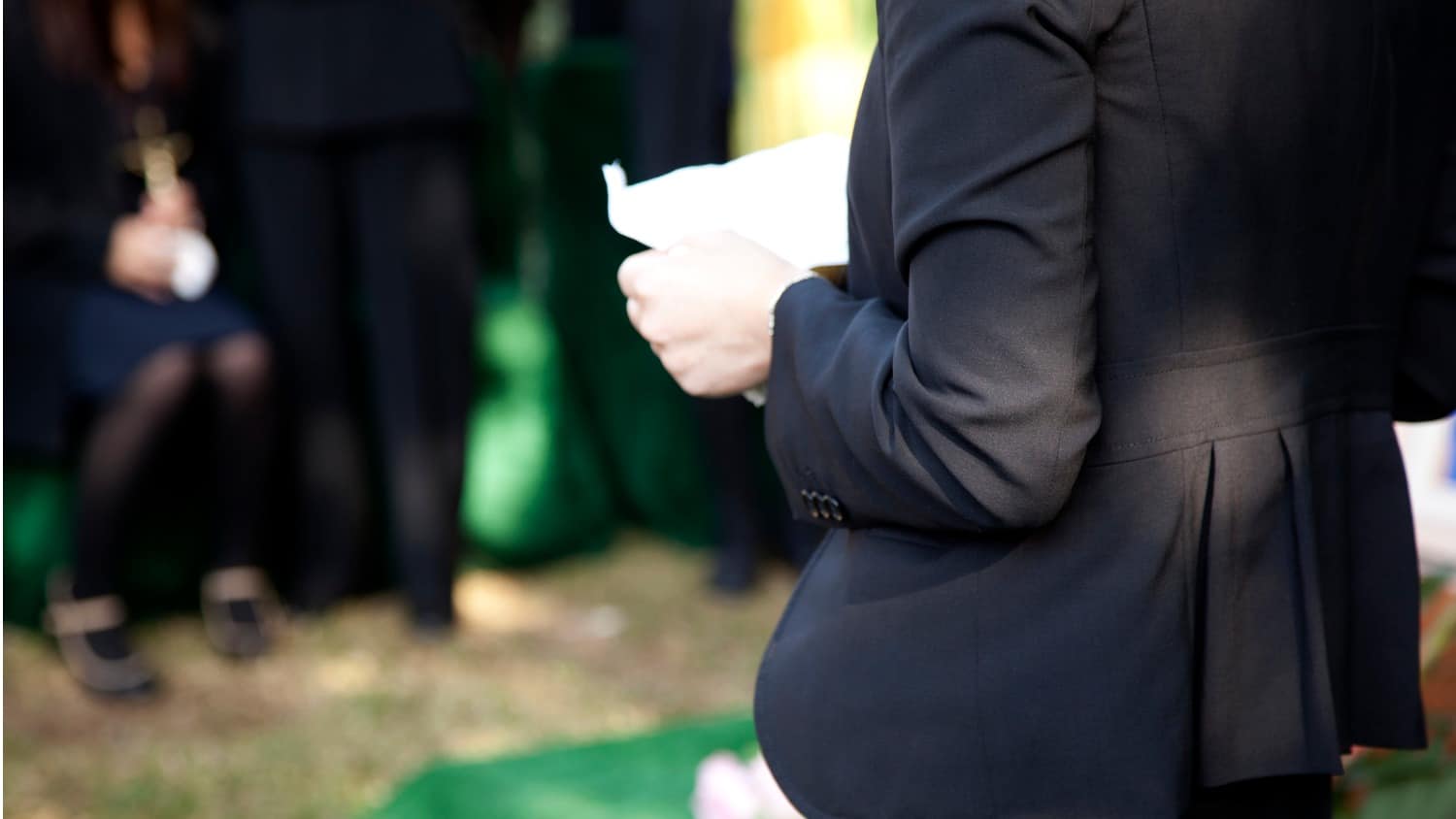
The Art of Giving a Eulogy – Share the Best Stories and Get Personal About It
Over my long career as a funeral director I’ve heard more than my fair share of eulogies. In a sense, eulogies are like taking a scenic drive through a life.
There are times the view seems so familiar, and other times when one may be struck by the beauty in front of them; beauty that they were not expecting to see, or never noticed before.
Such was the case in 2013, when I heard what was to become my favorite eulogy. It was given by the then mayor of New York City, Michael Bloomberg, for the city’s former mayor, Edward I. Koch.
Bloomberg was on top of his game that day as he stood on the bimah of Manhattan’s venerable Temple Emanu-El and addressed a filled-to-capacity crowd with warmth and humor. Bloomberg remembered Koch as New York City’s “quintessential mayor” and spoke of Koch’s extensive career as a public official, his love for the city of New York, and his contributions to its safety and wellbeing.
The crowd laughed as Bloomberg recounted incidents from Koch’s colorful past, such as the time Koch stood at the entrance ramp to the Queensboro Bridge, recently re-named for him, yelling, “Welcome to my bridge!” to approaching cars.
Koch being Koch, he stood in the freezing cold for another 20 minutes, even after the cameras stopped rolling, shouting out the welcome. Bloomberg also traced Koch’s life as a lawyer, author, and television personality after his three-term mayoralty came to an end.
But the most moving moment came when Bloomberg underscored Koch’s pride in his faith. Bloomberg recited the words that, at Koch’s request, would be etched into his tombstone: My father is Jewish, my mother is Jewish, I am Jewish.” They were the last words spoken by slain journalist Daniel Pearl.
Markedly less impressive was the eulogy that followed, presented by former United States President Bill Clinton. To the discomfited looks of many, Clinton shared a correspondence he once had with Koch about Viagra. If, indeed, eulogies are a roadmap for life, Clinton’s comments had many wondering, “How did we get here?”
True Words
The word eulogy derives from classical Greek and means “true words.” In ancient Greece it was customary that men of “approved wisdom and eminent reputation” be selected to eulogize the dead.
Fittingly, it was Pericles, who, in 431 B.C., eulogized the Athenian soldiers who lost their lives in the Peloponnesian War. Today, it is usually a colleague, close friend, or family member who is given the honor.
Eulogies have been the subject of three books by author Cyrus M. Copeland, who was inspired to explore the subject after giving one for his late father, an experience he describes as cathartic.
His first book, Farewell, Godspeed: The Greatest Eulogies of Our Time, includes the eulogies of such diverse individuals as Martin Luther King, Henry Ford, Andrew Carnegie, Eleanor Roosevelt, and Karl Marx.
It also contains the eulogy Madonna gave for fashion designer Gianni Versace in 1997. Madonna captured the attention of the audience with her very first words: “I slept in Gianni Versace’s bed.”
Like me, Copeland has a favorite eulogy. It was the one given by the late writer Pat Conroy for his father Colonel Donald Conroy, a.k.a., the movie character “The Great Santini,” and it appears in Copeland’s second book, A Wonderful Life: 50 Eulogies to Lift the Spirit.
“I’ve read hundreds of farewells and studied the art form. Conroy’s was a master class in remembrance,” said Copeland. “He tells stories, he is honest, he finds the bigger themes of his father’s life, he makes us laugh.”
And laugh is what I and hundreds of others did during the eulogy given last spring at the funeral of Queens County’s longest-serving district attorney, Richard Brown. Brown’s son-in-law, Bruce Foodman, shared a recollection about how intimidated he felt when he first married into the family of the eminent justice.
He was not sure how to address his formidable new father- in-law. Brown, sensing his discomfort, assured him that “Richard is fine.” Puzzled, and thinking someone had been ill, Foodman responded by asking who Richard was.
It’s Not About You
Unlike Foodman’s humorously self-effacing recollection, some speakers can’t help but talk about themselves, instead of focusing on the deceased. We have likely all sat through eulogies listening to speakers share how smart, attractive, accomplished, etc. the deceased thought they were.
Writer Larry Gelbart, who created the iconic television show M*A*S*H, wrote the forward for Copeland’s, A Wonderful Life, cautioning us to resist the temptation to make the eulogy about ourselves:
“A eulogy is not meant to be a vehicle for self-aggrandizement. Try pressing the shift key as little as possible when typing the letter i.”
Still, Copeland says that “it’s not a mistake to get personal – just as long as it ties into the themes of the deceased’s life. This is what distinguishes a eulogy from an obit – the personal imprint they left on the person behind the microphone.”
Getting personal is just what Dominick Yezzo, an administrative judge in New York City, did when he gave a eulogy for his late brother, James, this past January.
“Having been privileged to know him at the beginning and very end of his life, I connected myself to him intimately and removed myself to talk about him,” said Yezzo, who views the giving of eulogies as being “holy” and having a “sacred base.”
Yezzo, speaking on behalf of his large family, wanted to “let everyone know who his brother was.” So, when preparing the eulogy, he was mindful of incorporating aspects of his brother’s life that everyone could understand and relate to, including his Catholic school education and lifelong devotion to the New York Yankees.
Writing a Meaningful Eulogy
“A good eulogy should have at least one good story,” says Copeland. And for maximum impact, Copeland suggests relating a “recognizable truth.” “This,” he writes, “is what binds us together, and connects the eulogized to the dearly departed in a meaningful fashion.”
A stirring example of this was a recent eulogy I heard by a young woman who spoke about her father by telling the mourners, “My father made me feel loved, special, and secure, each and every day of my life.”
In Copeland’s third, and most recent book, Passwords: 7 Steps to Writing a Memorable Eulogy, he shares ideas to serve as the foundation for the making of a great eulogy. He uses Conroy’s eulogy for his father as an example: “… begin memorably, tell stories, tell the truth, get personal, find a big moment, and end strongly.”
Copeland, who often travels around the country to speak at conventions on the art of eulogizing, has a succinct answer to the question of why we need eulogies.
As he put it in Passwords, “A great eulogy assures us that our loved ones will endure in our collective memories. The more specific and real the remembrances, the stronger the bridge.”
Have you given a eulogy? For whom? How did you go about the task? What did you share? What was the reaction from those who attended? Please share any tips from your personal experience.
Tags Inspiration






